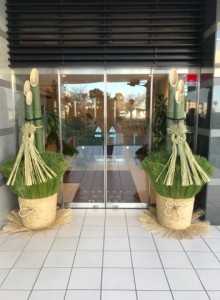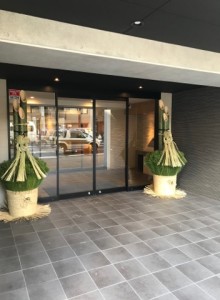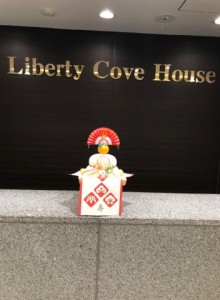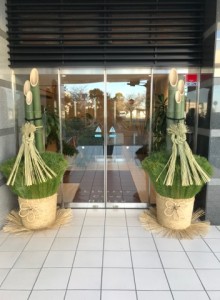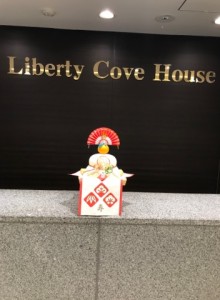For Japanese New Year, we put an ornament called “Kadomatsu” in front of Liberty Cove House and Liberty House Yokosuka’s gates and place “Kagami-Mochi” at the Concierge desk.
Kadomatsu
A kadomatsu (literally “gate pine”) is a traditional Japanese decoration of the New Year placed in pairs in front of homes to welcome ancestral spirits or kami (kami are the spirits or phenomena that are worshipped in the religion of Shinto) of the harvest. They are placed after Christmas until January 7 (or January 15 during the Edo period) and are considered temporary housing (shintai) for kami.
“The fundamental function of the New Year ceremonies is to honor and receive the toshigami (deity), who will then bring a bountiful harvest for farmers and bestow the ancestors’ blessing on everyone.” After January 15 (or in many instances the 19th) the kadomatsu is burned to appease the kami or toshigami and release them.
Kagami Mochi
This is Kagami mochi, literally mirror rice cake, is a traditional Japanese New Year decoration.
The two mochi discs are variously said to symbolize the going and coming years, the human heart, or the moon and the sun. The “daidai”(a Japanese bitter orange), whose name means “generations”, is said to symbolize the continuation of a family from generation to generation.
It is traditionally broken and eaten in a Shinto ritual called Kagami biraki (mirror opening) on the second Saturday or Sunday of January.


